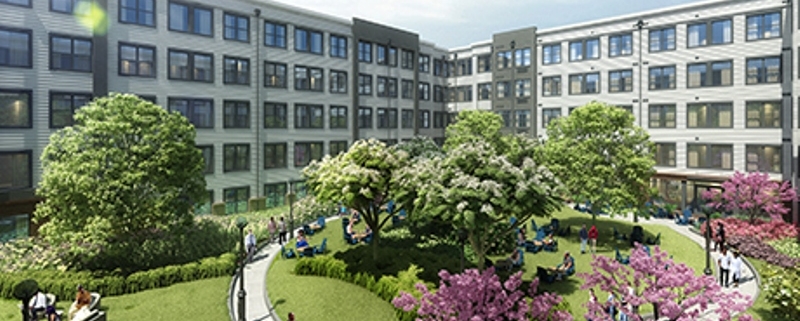What Drives Investors To US Healthcare Real Estate
US Healthcare real estate continues to buck the work-from-home trend that has stifled growth in office properties in all major economies post-Covid-19.
This is due to a number of factors, including the one-on-one nature of medical care and long-term growth trends in the medical sector in the US, which ensure that rentals and capital values for MOBs stay relatively stable.

The medical office market has consistently seen annual rent increases since 2012. Favourable lease terms support minimal tenant turnover, creating steady rental cash flow, thus benefiting both vacancy and rent trends. According to a report from Colliers, despite the rise in average rentals in MOBs, vacancies have declined to 8%, contrasting with vacancies in the office sector in general, which stand at 15.1% and growing.
Rentals for traditional offices usually rise faster than those for MOBs in upturns but MOB rentals tend to be more resilient during downturns. Since 2000, growth in MOB rentals has averaged 1.8% a year compared with 1.4% average growth for traditional office space.
Advantages Of Healthcare Real Estate Over Other Property Investments
These advantages arise due to several underlying drivers of MOBs.
One is that since the Affordable Care Act was passed in 2010, the number of Americans with health insurance has risen steadily. These trends are expected to continue. In June last year, the Office of the Actuary Centres for Medicare & Medicaid Services forecast that from 2022 to 2031 average growth in national health expenditure at 5.4% would outpace average GDP growth at 4.6% in the same period, resulting in an increase in the health spending share of GDP to 19.6% in 2031 from 18.3% in 2021. By 2031, 90.5% of the US population will have medical insurance (in 2009 it was 85%).
Another driver is the ageing US population. The number of people aged 65 and older in the US has risen by about 3% a year over the past decade, and older people are generally more likely to use medical services such as routine check-ups, dental cleaning and visiting specialists – which are increasingly happening in medical offices rather than hospitals.


Healthcare real estate is different from most other types of office building in that healthcare tenants are readier to sign long-term leases because they build up a reputation with patients in their vicinity and often require significant set up costs especially in the case of imaging, laboratories, theatres, oncology and even dentistry. For investors in these buildings, long leases provide predictable cash flow, lower tenant turnover (and associated sign-on costs) and lower vacancy rates.
Longer-Term Outlook For Healthcare Real Estate
While demand for healthcare real estate is growing, supply is restricted as banks are pulling back lending in an environment of high interest rates and construction costs, which deters new developments. In this environment, opportunities also arise to buy distressed assets at attractive entry points that will deliver superior returns over the long term.
According to a survey of 37 institutional healthcare investors by US-based management consultants KaufmanHall, which was published end-September 2023, almost 90% of survey respondents reported that occupancy rates had improved or stayed the same over the preceding 12 months. 86% of respondents expected their MOB portfolios would perform similarly or better in 2024, and almost the same proportion expected annual rentals to rise by 3% or more for new or renewed MOB leases.
Although the majority of respondents said tenant improvement packages were having to become more aggressive to persuade new tenants to sign or existing tenants to renew, only 16% said they had had to offer inducements such as a rental-free period. KaufmanHall suggested demands for better sign-on deals probably reflected rising costs due to inflation rather than more fundamental shifts.
“In short, the survey results indicate a market with significant fundamental strength despite capital market challenges. Cap rates are up, meaning valuations are down, and transaction volumes are also down. Past experience suggests that this dynamic may offer a significant opportunity to buy high performing assets at attractive historic relative valuations,” KaufmanHall said.
Conclusion
Steep increases in inflation and interest rates over the past couple of years have demonstrated that property is not always a safe haven. Investors in over-geared properties, or those where lease agreements provide no protection against rising tenant costs, are feeling the strain. There are an increasing number of distressed sales in the general office market. This is an environment where investors should pick their sector very carefully. Well-maintained and well-tenanted healthcare buildings in good locations, managed by an experienced team, stand out in this market.
Source: BizNews




